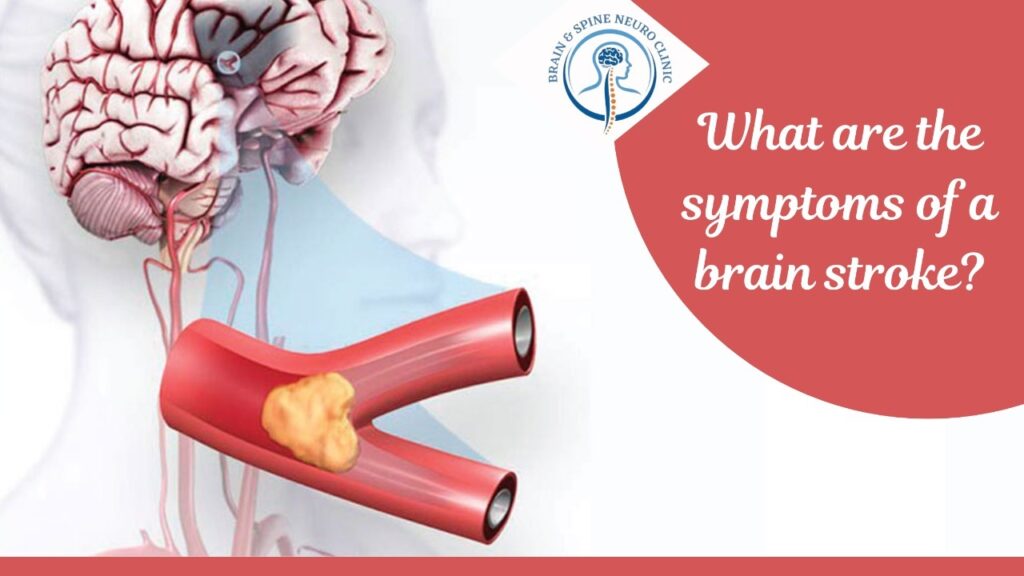A stroke is a potentially fatal disorder that develops when insufficient blood flow to a specific brain area. The most frequent causes of this are a blocked artery or brain hemorrhage. The brain cells in that region start to die from a lack of oxygen if there isn’t a constant flow of blood.
A disturbance in blood flow can cut off crucial oxygen and glucose to the brain, resulting in brain death within minutes.
According to the Best Neuro physician in Greater Noida, A stroke (also known as brain stroke or cerebrovascular accident) is a medical disorder in which the blood flow to a part of the brain. It is a medical emergency in which brain cells die within minutes of being deprived of nutrition and oxygen owing to a blood supply limitation. The inability of brain cells to regenerate causes chronic and irreversible harm.
What are the signs of a brain stroke?
Men and women both experience the following symptoms:
- One or both eyes have blurred, darkened, or double vision.
- Slurred voice, difficulty speaking, and confusion
- Walking and balance difficulties
- Severe headache with vomiting or unconsciousness that occurs suddenly
- Sudden, one-sided paralysis or numbness of an arm, limb, or face, as well as drooping of the lips to one side when smiling
- Acute headache
Types of Brain Stroke
Brain strokes are classified into three types:
1. Ischemic stroke
An ischemic stroke occurs when a clogged artery shuts off blood flow to a part of the brain. Ischemic stroke accounts for up to 85% of all instances of cerebral stroke.
Blood clots or restricted blood flow produce these obstructions. Due to atherosclerosis, they can also be made by plaque fragments breaking off and establishing a blood vessel.
2. Haemorrhagic stroke
A hemorrhagic stroke occurs when a blood vessel leaks or bursts and pours into the brain tissue or around the brain.
A hemorrhagic stroke occurs when a cerebral artery ruptures or releases blood. The blood from that artery causes increased pressure in the skull and swelling of the brain, causing damage to brain cells and structures.
3. Transient Ischemic Attack (TIA)
A ministroke is a TIA. It happens when the blood supply to the brain is briefly cut off. It has symptoms comparable to a complete stroke but usually goes away after a few minutes or hours. A blood clot is typically the cause of a TIA. It should be noticed since it frequently warns of a complete stroke in the future.
Risk Factors
A stroke may happen to anybody. A few factors, however, may raise the chance of a brain stroke.
- Over the age of 55.
- Men are more likely than women to get a stroke.
- A history of brain stroke or heart attack in the family.
- Obesity.
- Inactivity physically.
- Abuse of alcohol.
- Abuse of drugs.
- Smoking.
- Blood pressure is high.
- Cholesterol levels are elevated.
- Uncontrolled diabetes.
- Apnea when sleeping.
- Cardiovascular illness.
Treatment for Brain Strokes
Neurologists will arrange the best course of therapy for a patient after determining if they have had an ischemic or hemorrhagic stroke. It is crucial to restarting blood flow to the brain as soon as possible after an ischemic stroke to provide the brain with the oxygen and other nutrients it needs to operate. To remove the clot obstructing the blood flow, doctors may give intravenous clot-busting medication. Medical professionals insert a thin plastic tube called a catheter into the brain arteries as part of an emergency endovascular treatment to remove the blockage immediately.
According to the Neuro Specialist Doctor in Greater Noida, the goal of hemorrhagic stroke therapy is to lessen brain pressure and bleeding. Emergency medications that decrease blood pressure, prevent blood vessel spasms, promote clotting, and stop seizures may be prescribed by neurologists. As part of hemorrhagic stroke therapy, a neurosurgeon may conduct urgent surgery to drain the blood from the brain.

